Description
Frontline leadership is vital to improve morale and the quality of care at a time when chronic and persistent poor care, neglect and abuse continue within inpatient and residential health and social care settings.
Most leadership training approaches stress having good clinical skills but pay little heed to how best to increase the positive influence that individual frontline staff can have on their work environment. This essential training and development manual addresses that need through a simple but powerful framework for becoming better leaders for their teams.
The manual is CPD accredited and the exercises are designed to increase self-confidence and promote the articulation of caring values, enhance the appropriate use of authority, and increase the individual’s ability to motivate others. The simplicity and effectiveness of the approach comes from careful analysis of poor care and ways to prevent it happening, and a distillation of the theories of good care leadership, based on psychology, psychotherapy and nursing studies. This resource can be used for group training or for individual leadership development.
Author
Paul Whitby, formerly a psychiatric nurse and clinical psychologist, is currently a clinical supervisor to Admiral Nurses, and contributes to the Bath University Clinical Psychology course and the Aneurin Bevan NHS Trust management development course. He started his career as a psychiatric nurse and for a while was a Charge Nurse at the Bethlem Royal Hospital before completing his Clinical Psychology training. Throughout his clinical psychology career he has worked on wards alongside the nursing staff. He believes that his experiences have given him a unique insight into the problem of poor morale and care, and how to do something about it. He has been involved in training at various levels for many clinical disciplines in the NHS. He is also a trustee of a local dementia charity. He edits the Faculty of the Psychology of Older People Bulletin (a British Psychological Society periodical).
Content
Introduction
Confidence and Competence
Articulating Values
Use of Authority
Motivating Others
Project: Putting it into Practice
Theory and Evidence
Links to Other Qualifications
Details
ISBN: 978-1-913414-61-0
Format: Training Pack
Publisher: Pavilion Publishing and Media Ltd
Publication date: 7th December 2020

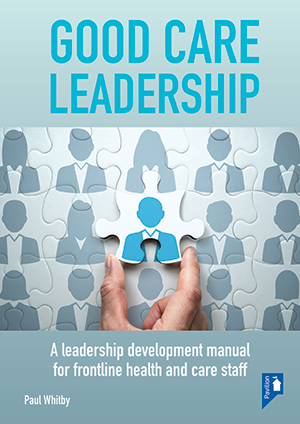
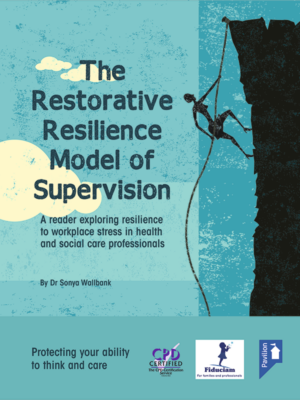
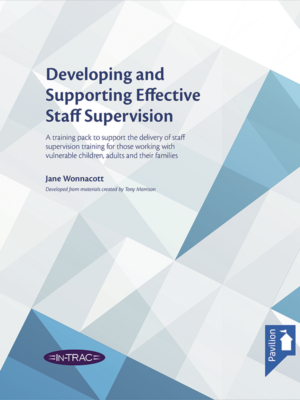

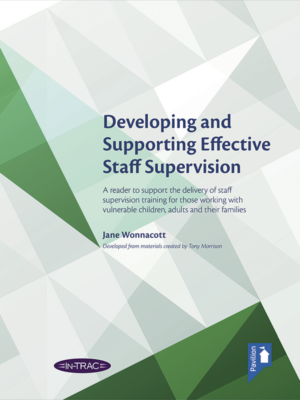


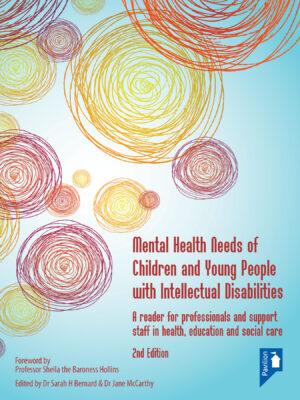
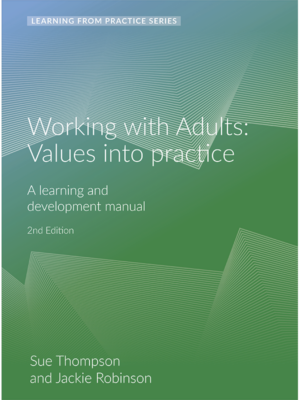
Pete Morgan, Independent Safeguarding Consultant. Review published in the Journal of Adult Protection on 12 Sep 2023 –
In the Introduction, Paul Whitby, identifies the difference that a change of manager can make to the quality of care provided in a health or social care setting; a change not only in the nature of the care provided but also in the manner in which it is provided. All this with no change of the staff group providing that care. This is a scenario that I am sure many health and social care providers will be familiar with from their own experience: the number of services, particularly care homes in my experience, that fail to maintain high standards of care when a manager moves on or which yo-yo between acceptable and unacceptable standards of care as a series of managers come and go, often in response to poor quality care, is a matter of concern to service users and their families as well as commissioners and regulators of services.
This manual is therefore a welcome addition to the toolkit for providers and individual managers to use to develop their services and, possibly more crucially, their staff to continually review and enhance the quality of the care they provide. Importantly, the manual recognises the need for managers to have a combination of leadership skills along with management and professional skills but particularly inter-personal skills and awareness. There is no single “recipe” for a good leader or manager, and teams, which are what any group of staff providing health or social care should be, require both managers and leaders.
The distinction between the two is not always as clear as it could be in the manual, and perhaps does not need repetition but does require spelling out at the beginning. Doing so would enable the author to introduce the concept of “reflective practice” that can be such a powerful tool in enhancing the quality of care and also developing leadership skills in staff and fostering a team ethos and approach to service provision.
By focusing on the role of frontline staff, the author has underplayed the role of senior and strategic management culture in the development of ward or home cultures; one of the lessons from reviews of service failures such as Winterbourne View and Mid Staffs has been the need for senior and strategic managers to be more in tune with and aware of the realities of the frontline experience, of the practicalities of delivering care, not just their managerial responsibilities. Why wasn’t the poor-quality care identified internally in both the above cases rather than having to be belatedly acknowledged after external criticism? Why, in the case the author outlines in the Introduction, didn’t hospital managers identify the poor-quality care? In fact, the manual could easily be used to enable these managers to focus on their broader roles and the impact of their actions, or inaction, on service delivery.
Good leadership can be provided and authority recognised both from peers as well as those in a management position, as the author acknowledges. However, if leadership or authority is lacking, just as nature abhors a vacuum, so a team will develop its own, not necessarily of a positive nature, as can be clearly seen in the case of Winterbourne View, where strong personalities exercised leadership and authority to the extreme detriment of the service users and also the service as a whole. This was a point that could have been made by the author.
The author observes in the Introduction that: “The people who know how to improve care on wards and in care homes are already working there”. It is equally true the patients and residents have a pretty good idea too – as do their families and other significant others! The importance of involving service users and their families in developing and monitoring the quality of service delivery is missing from the manual and could have been acknowledged.
It is difficult to comment on a staff development tool without actually testing it out in practice. The sessions and the supporting presentations and handouts look to be well thought out and coordinated to build into a programme that can be tweaked to remove unnecessary repetition if individual sessions are held close together, a point the author recognises. This flexibility extends to the potential to adjust the depth and focus of the content to suit the group that is being worked with, hence my above comment on its suitability for use with senior and strategic managers as well as frontline staff.
My only slight quibble is that inclusion of the author’s views on the optimum size of the group for each session, drawn from his own experience, would have been a helpful addition for those wanting to run sessions. The above are minor issues compared to the obvious strengths of the manual in facilitating a team approach to the frontline monitoring and development of health and social care services. It will be a valuable tool for a broad range of staff groups. As well as the obvious target constituency of frontline staff and their managers, it will also be of value to more strategic managers and hence for leadership and management programmes in both health and social care services. I can also see how individual sessions would be of relevance to students on courses in health or social care to enable them to reflect on the importance of working as part of a team to best support and care for their service users on qualification. As such, the manual is a helpful antidote to the managerialisation of health and social care that has developed over the past decade or more and is welcomed as such.
Dr Robert S P Jones, Honorary Professor of Psychology, Bangor University North Wales –
This is a unique and very valuable leadership development manual. It is written from a simple and yet extremely powerful premise: frontline leadership is a neglected but hugely important aspect of leadership. Its authenticity comes from the author’s background both as a charge nurse and a clinical psychologist, and this background leads to the ability to combine theory, practice and personal experience in ways that are refreshingly ‘real’ yet clearly evidence-based. The writing is very skillful and manages to convey complex concepts in a clear and accessible manner. From setting the tone of the ward atmosphere, to showing leadership in the multitude of interactions that occur every day, the author makes a compelling case for the vital contribution of frontline leadership to patient welfare.
The course training materials are well-thought out and contain everything that an organisation needs to provide relevant leadership training ‘in house’. Because of this, the training does not have to be outsourced, but can be delivered by existing staff with some prior experience of training. There are notes provided to support the trainer, and all training resources are provided, including handouts and PowerPoint slides (both as hard copies and digital versions that can be downloaded and used in the training itself).
Many leadership books and training resources are available, but the focus on frontline leadership in Good Care Leadership makes it unique. This greatly increases the probability that any organisation undertaking this training should see an immediate increase in the positive influence that individual frontline staff can have on their day-to-day work environment. This, in turn, should lead to clear and measurable improvements in the quality of life of the people they care for.
Good Care Leadership comes highly recommended as a resource for any organisation wishing to support the welfare of their existing frontline staff and, by doing so, to increase their unique contribution to patient welfare.